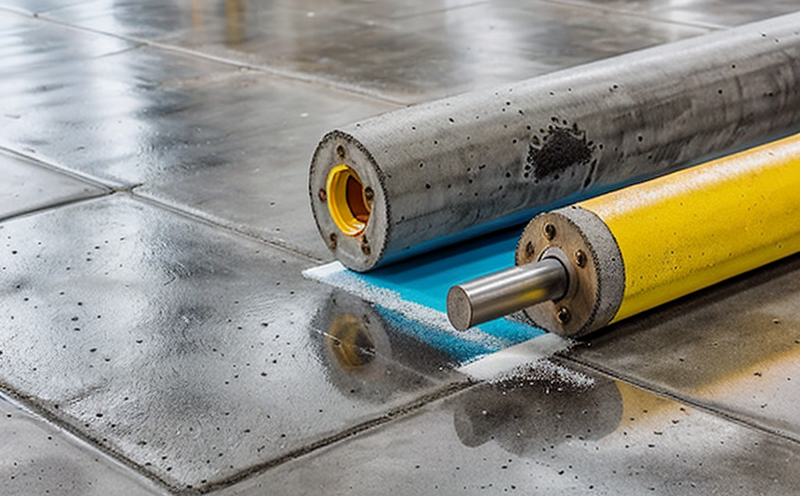Testing the adhesion of coatings to substrates such as concrete, wood, or metal to ensure durability
Ensuring Durability Testing the Adhesion of Coatings to Substrates
In todays competitive market, businesses are constantly seeking ways to improve product durability and longevity. One crucial aspect of this is ensuring that coatings adhere properly to their intended substrates whether its concrete, wood, or metal. At Eurolab, our laboratory service specializes in testing the adhesion of coatings to substrates, providing businesses with valuable insights into the performance of their products.
Why is Testing the Adhesion of Coatings Important?
Coating adhesion is critical for maintaining a coatings effectiveness and extending its lifespan. When coatings fail to adhere properly, they can peel off, crack, or flake away prematurely, resulting in costly repairs, replacements, and lost business. In contrast, well-adhered coatings ensure durability, resistance to wear and tear, and improved aesthetics.
Advantages of Testing the Adhesion of Coatings
Our testing services at Eurolab offer a range of benefits that can significantly impact businesses
Improved Product Performance By understanding how coatings adhere to substrates, manufacturers can refine their products to achieve optimal adhesion.
Reduced Maintenance and Repair Costs Properly adhered coatings minimize the need for frequent repairs and replacements, saving businesses time and money.
Enhanced Customer Satisfaction When coatings last longer and perform as expected, customers are more likely to be satisfied with a product or service.
Compliance with Industry Standards Our testing ensures that coatings meet industry-specific requirements, reducing the risk of non-compliance and associated penalties.
Competitive Advantage Companies that prioritize coating adhesion can differentiate themselves from competitors and establish a reputation for quality.
Key Benefits of Testing Adhesion at Eurolab
Our comprehensive testing services include
Shear Adhesion Evaluates the ability of coatings to withstand shear forces between two surfaces.
Peel Adhesion Measures the force required to peel off a coating from its substrate.
Tack Adhesion Assesses the initial bonding strength between a coating and substrate.
Roll Adhesion Tests the adhesion of coatings subjected to rolling or flexing stresses.
How Can Eurolab Help Your Business?
Our expert technicians use state-of-the-art equipment to perform tests that are tailored to your specific needs. We understand the importance of accurate, reliable results, which is why we
Develop Customized Testing Plans Based on your products unique requirements and industry standards.
Conduct Thorough Quality Control Ensuring accuracy and precision in every test result.
Provide Clear, Actionable Recommendations Helping you optimize coating formulation and application for improved adhesion.
Frequently Asked Questions
Q What types of substrates can be tested for adhesion?
A We test coatings on various substrates, including concrete, wood, metal, and more.
Q Can I schedule a testing service at any time?
A Yes, our flexible scheduling allows you to plan your testing according to your needs.
Q How long does the testing process typically take?
A Testing times vary depending on the type of test and the complexity of the product. Our technicians will work with you to ensure efficient turnaround times.
Q What if my coating doesnt adhere as expected?
A Well provide recommendations for optimizing your coating formulation or application to improve adhesion.
Conclusion
In an industry where durability is paramount, Eurolabs testing services offer a critical advantage for businesses seeking to enhance product performance and longevity. By understanding the adhesion of coatings to substrates, manufacturers can reduce maintenance costs, improve customer satisfaction, and establish a competitive edge in their market. Trust our experienced technicians and state-of-the-art equipment to help you achieve superior coating durability.
-
Testing the ability of materials to adhere to surfaces without detaching or peeling
-
Evaluating the bond strength of adhesives used in construction materials and coatings
-
Testing whether adhesives maintain their integrity under stress, temperature changes, or environmental conditions
-
Simulating real-world conditions to test the durability of adhesive bonds over time
-
Ensuring that bonding agents used in construction materials such as tiles, paint, or flooring are durable
-
Testing for resistance to forces like shear, tension, and compression that could break the adhesive bond
-
Verifying that adhesive materials can withstand moisture, heat, and other environmental conditions
-
Simulating heavy load conditions to test how adhesives perform under pressure or weight
-
Ensuring that adhesives used in outdoor and exposed construction applications remain stable
-
Verifying the adhesion of materials used for insulation, membranes, and coatings to various surfaces
-
Testing the peel strength of adhesives used in construction to ensure that bonds do not fail prematurely
-
Simulating the impact of thermal cycling on the adhesion of building materials over time
-
Testing for resistance to chemical exposure that could weaken or break adhesive bonds
-
Ensuring that adhesives maintain their performance under harsh conditions, such as high humidity or freezing temperatures
-
Verifying that adhesives used in joints and seams do not weaken or detach during building settlement or movement
-
Testing the adhesion of materials in construction panels to ensure stability over time
-
Ensuring that adhesives provide a consistent and strong bond without creating voids or bubbles
-
Simulating mechanical stress and vibration to evaluate how adhesives perform in dynamic environments
-
Verifying that adhesives do not cause material degradation or compromise structural integrity over time
-
Ensuring that adhesives used for floor and wall coverings provide secure bonding without excessive wear
-
Testing for any potential failure points in adhesive joints that could cause materials to separate over time
-
Ensuring that adhesives maintain their performance even after long exposure to weather or UV rays




